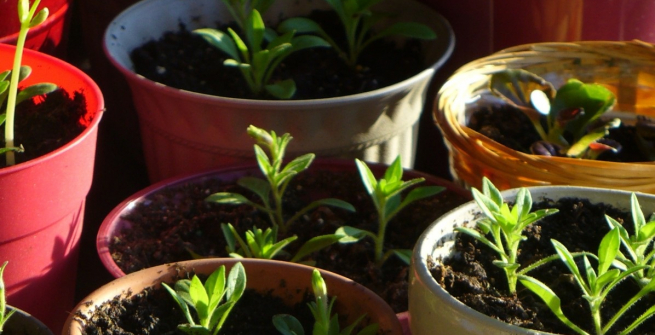My name is Stephanie Nolasco, I am a junior in high school at Granada Hills Charter High School. I'm currently reading Red Azalea by Anchee Min. For the past few months, I have been learning to bake and have made cookies, cupcakes, cakes, and brownies from scratch, and hope to learn more. In order to keep myself active during these times of online activities such as school, I go on daily walks for about an hour sometimes with my family. My branch is Mid-Valley Regional Library and prior to covid, I enjoyed going there to do some homework and to find new books to read. I hope to return soon.
As a teen in today's world, I find it important to know what is going on in our surroundings, this includes our Earth. There are many environmental issues going on and will have lasting effects for years to come. Hearing back about this program Teens Leading Change where food poverty and urban gardening is discussed, sparked my interest to learn about what is going on in my local area and how I can be involved. I have grown a variety of plants in my parent's backyard, but no edible food. About five weeks ago when I began the journey of growing romaine lettuce, I was excited and ready to start. I water the plant every two days in the afternoon and take progress images on Mondays, the plant itself has no sprouts, yet. I leave it in the sun for about 5 hours a day and move into a shadier area for the remaining hours. By growing a plant I have been able to look at various ways to help keep the plant alive, based on what I found on the internet it needs a cool system and lots of water.
While doing some internet research I saw the benefits of growing fresh products in our backyard. Some of these benefits include reducing expenses on grocery bills, environmental impacts, food waste, and much more! This can help those facing food poverty because fresh produce is costly which becomes harder for someone to maintain a healthy lifestyle. However, not everyone can afford to have a backyard or pot big enough to grow lettuce, carrots, oranges, apples, cucumbers, and many more. A way to help people who don’t have resources for a personal garden is using a communal one. It provides a good resource for those with low-income backgrounds and makes it possible for all people to have the opportunity to have clean and healthy foods without the sticker price of a grocery store by growing them.
Having a communal garden can help those with the want of growing their own food at a reduced cost, with enough space. Materials such as soil, seeds, water, plant food, etc… can be a communal effort by donating or renting an area to grow their plants. Which I find interesting and distinctive, as people can come in and out to check on their plants.
Since the start of growing romaine lettuce I have learned more about growing plants, I have enjoyed researching what is the importance and benefits of growing your plants. By joining I hope I can help with expressing the impact of a communal garden, demonstrating the positives as well. And encourage others to be more involved and possibly move forward with the communal garden.
—Written by Stephanie Nolasco, Teens Leading Change Cycle 5.

Stephanie is currently a junior at Granada Hills Charter High School
The Teens Leading Change initiative has funded and launched over 30 projects across 40 branches, including 5 projects across 7 branches that are happening now! These projects are related to Library Advocacy/Information Literacy, Cultural / Community Conversations & Archives, Know Your Rights, Immigration & Citizenship, Net Neutrality / Privacy, and Voting Rights & Voter Registration and more.
